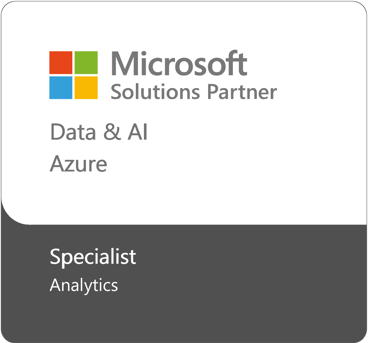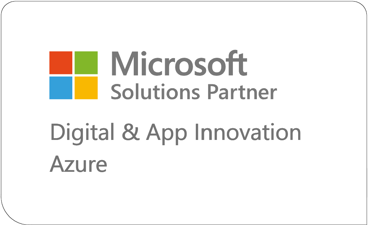How You Can Use Modern Marketing Technology For the Better
Modern marketing technology is a set of tools that will keep every marketer on their toes, and at the same time, change the way they communicate with customers for the better.

Marketing used to be straightforward. It used to be like this: Create a message, pick your channels, hope for the best, and that’s it. Now, it has since become a norm that every marketing effort for every customer needs to be personalised. And who can blame them?
Everyone would want that. The whole marketing landscape has evolved from the simplest email software into a sophisticated ecosystem that blends almost every possible tool together. Understanding this evolution is slowly becoming less optional and more of a way to stay competitive.
How We Got to Where We Are Marketing-wise
Modern marketing teams mix human creativity with cutting‑edge technology. Where we once relied on broad demographics and gut feel, we now combine insight with artificial intelligence, creative storytelling with predictive analytics, and brand building with customer experience optimisation.
Customers meet your brand everywhere. It can be through social media, your website, mobile apps, email, in‑store, and new channels arriving every quarter. Each interaction on each platform creates data. When that same data is used well, it powers a more relevant, timely, and valuable engagement.
The best organisations strike a balance. They use the latest tech to understand behaviour, predict preferences, and automate the repetitive work. They make all of those work while keeping human judgment that builds a real connection. It may come as a surprise, but that same capability isn’t limited to organisations with set big budgets anymore. Many AI‑driven tools are accessible to small teams, too, which means strategy and execution quality matter more than size. And that’s where we are now.
The Six Pillars of Modern Marketing Technology
Artificial Intelligence (AI)
AI isn’t limited to sci-fi anymore. Today’s marketing AI focuses on practical wins like content optimisation, audience segmentation, and performance prediction. It analyses behaviour to pick the right time to send, the headline most likely to land, and the “next best action” based on what someone has viewed or bought. It’s like an ultra‑attentive assistant that works 24/7 without slowing down.
Big Data
You can’t personalise in real time without a steady flow of trustworthy data. Big Data’s capabilities let you react as your customers act. Things like triggering helpful responses when someone abandons a basket, revisits pricing, or engages with a specific theme are just a few of them. It’s not about hoarding information, but about turning signals into timely and useful moments.
Business Intelligence (BI)
Business intelligence connects activity to outcomes. It shows what’s working, why it’s working, and what to do next. This tool is for proving your ROI and moving investment where it matters. If anything, BI will teach you that clear dashboards and narratives beat vague reports every time.
Digital Experience Platforms (DXP)
A digital experience platform keeps every experience consistent and contextual across every touchpoint. It can be web, mobile, and beyond. Simply put, it manages your content and sets personalisation rules, as well as the customer’s journey, so every platform feels like it belongs to the same business or brand. In return, it would feel like it’s meant for the same customer.
Digital Asset Management (DAM)
If content is your fuel, then DAM is the tank. It’s a central library for almost any media, including images and video. It also copy-protects your brand and speeds delivery at the same time. With DAM on your side, your team finds the right assets fast, avoids rework, and ships campaigns that look and feel consistent.
Data Storytelling
Raw data alone overwhelms. As a further refinement and application of Power BI, Data Storytelling transforms numbers into narratives that people understand and care about. It blends design, context, and clear messaging so the data at hand is told through compelling visuals. This is where data inspires people to take action.
As a form of Data Storytelling, Enlighten's Aquarium is only one of the many forms it can take. Aquarium's visuals are what set it apart and promote action and culture shift in different businesses and industries.
Separately, these six pillars can upgrade every business. But when used simultaneously, they change marketing from the ground up and open possibilities for new markets you didn’t know existed.
How Personalisation and Customer Experience (CX) Fit Into the Big Picture
Sending a plain “Hi, Jane” in an email used to be the baseline when it comes to personalisation. Not anymore. It has since moved to recognising preferences, behaviours, and needs. From there, you deliver the right value and the right moment.
That starts with connected systems. When your website, email platform, CRM, and service tools share data, you stop sending “just bought” promotions. Instead, you start sending helpful “how to get more from it” content, or cross-sell a product that genuinely adds value.
Now, customer experience goes beyond single touchpoints to the whole journey. Modern marketing tech helps you map that journey, find friction, and fix it quickly. This is where the most advanced personalisation engines shine as they learns as they go. These engines refine recommendations and then time the interactions so engagement improves. This starts a cycle where that same engagement generates more data, which in turn improves personalisation again. If done right, the cycle feels thoughtful, not intrusive.
But how do all these elements look when done well in real life?
Gallagher’s Automation Story
Automation is a force multiplier when it serves the relationship. Gallagher, which is known for security technology, wanted to give smaller businesses the same quality of experience their enterprise clients enjoy.
Working with Enlighten, Gallagher implemented automation through Sitecore marketing on Azure to track behaviour, adjust journeys, and deliver relevant follow‑ups automatically. The intention was to make each step feel personal and useful. To achieve that, they redesigned key moments like first enquiry, post‑purchase onboarding, and renewal instead of simple automation of old processes.
As Gallagher’s CMO put it, “We’ve moved from a static website with brochures to something that will enable us to review the location customers are visiting us from and their customer profile to deliver content that’s really relevant to them.”
Automated emails became helpful guides, not noise. When customers replied, they’re already following up with context. Then, the team reviewed response rates, engagement, and feedback regularly to refine sequences.
The result?
-
Higher engagement
-
Shorter sales cycles
-
More time for high‑value work like relationships and strategy
The Bottom Line
Modern marketing technology is here now, and it’s meant to stay. It’s a set of tools that will keep every marketer on their toes, and at the same time, change the way they communicate with customers for the better.
If your business or organisation is ready to take that big step into a more modern approach to marketing, check our services and find out how modern marketing can change the way you do business.



